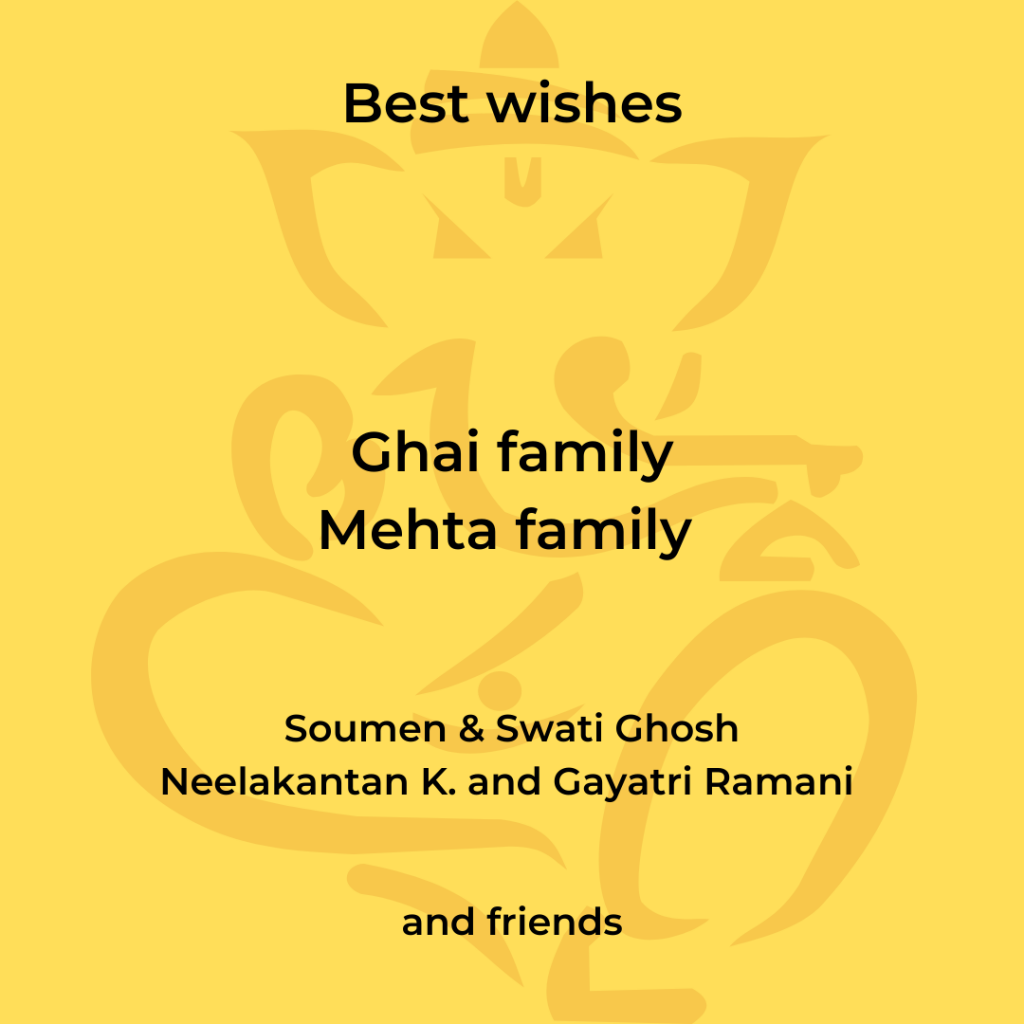
The world searches for peace, for tranquility, and in India, the search has been an integral part of life.
Freedom from worry, and detachment from the cares of existence stimulate higher thinking and spirituality.
And in India, this higher thinking and the reflection on the nature of existence has been a way of life. This is the basis for samskāras.
Performance of the samskāras have been directed as fit to bring about the status of tranquility and higher purpose, just as a work of painting gradually unfolds itself on account of several colors with which it is drawn…
Annaprāshana is one of the 16 major samskāras. It is the introduction of the young one into the external world. For the first six months, the child is carefully nurtured at home, on mother’s milk. The Annaprāshana is the first step towards interacting with the panchabhutās – the five elements, through food.
Food is made from the five elements, and the ingested food helps us grow and shape our personalities. Hence, what we put inside our bodies is of paramount importance – after all – you are what you eat!
Anna means “boiled rice” and Prāśana means“causing to taste”.
AnnaPrāśana is colloquially known as the first rice ceremony.
ॐ ईशावास्यमिदँ सर्वं यत्किञ्च जगत्यां जगत्।
तेन त्यक्तेन भुञ्जीथा मा गृधः कस्यस्विद्धनम्॥१॥
The Supreme Consciousness pervades in all that exists in this universe. Enjoy what Ishwara has given you with a feeling of detachment and don’t desire to take anyone’s possessions by unfair means.
Yajurveda 40.1
And so, have food with renunciation. Our tradition is that as soon as food comes to the plate, a portion should be taken out to offer ants and other animals, before one eats it.
Vyavahārika nama
Legal name, used for everyday interactions.
रोहामृत
रोह + अमृत
Rohaamruta
IAST – Rohāmṛta
Meaning – The one who has the ability to impart the nectar of immortality
Here, the nectar of immortality can mean knowledge – the ultimate truth.
Correct Pronunciation – Ro | Haa | Mri | Ta (as in TApas)
Incorrect – Ro | Ha | Mrit, Ro | Haa | Mrit
kula nama
Based on our kula devta – कृष्ण (Kṛṣṇa)
केशव
Keshava
IAST – Keśava
Order of emblems: Shankha, chakra, Padma, Gada
One whose own forms are Brahma, Vishnu and Shiva, for the creation, maintenance and destruction of the universe (by synthesis of ‘K’ for Brahma, ‘A’ for Vishnu, ‘isha’ for Shiva and ‘va’ for ‘svarupa’ form)
One who is endowed with the rays of light spreading within the orbit of the sun
One who has good, soft, dense, black hair (Kesha)
One who destroyed the demon Keshi in the Krishna avatara
The lord of creation, preservation, and dissolution, Keśava represents all three forms.
Also, the destroyer of the demon-Kesi, as per Vishnu Purana. Interestingly, by chanting the name Kesava, one gets rid of their Kleshas, which are the root cause of all our pain and suffering, there are five major kleshas as described in Patanjali Yoga Sutra — Avidya (Ignorance), Asmita (Egoism), Raga (Likings), Dvesa (Dis-likings), Abhinidvesa (Fear).
Pātra Pujan
ॐ हिरण्मयेन पात्रेण, सत्यस्यापिहितं मुखम्।
तत्त्वं पूषन्नपावृणु, सत्यधर्माय दृष्टये॥
Anna Samskāra
ॐ पंच नद्यः सरस्वतीम् अपि यन्ति सस्रोतसः।
सरस्वती तु पंचधा सो देशेऽभवत्सरति॥
Vishesh Āhuti
ॐ देवीं वाचमजन्यन्त देवाः तां विश्वरूपाः पशवो वदन्ति।
सा नो मन्द्रेषपूर्जं दुहाना देनुर्वागस्मानुप दुष्टुतैतु स्वाहा।
इदं वाचे इदं न मम।
Anna Prāshan
ॐ अन्नपतेऽन्नस्य नो देह्यनमीवस्य शुष्मिणः।
प्रप्रदातारं तारिषऽऊर्जं नो धेहि द्विपदे चतुष्पदे॥






